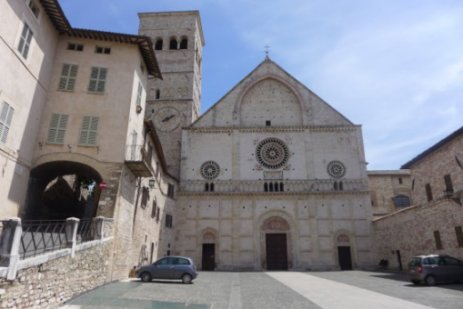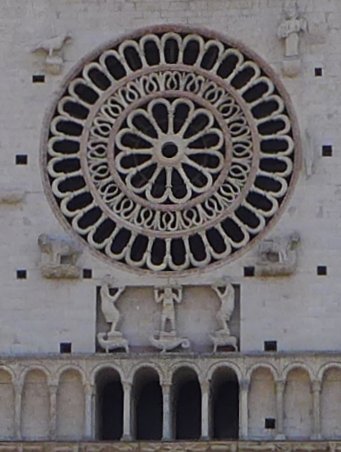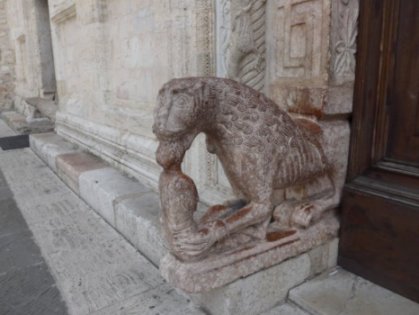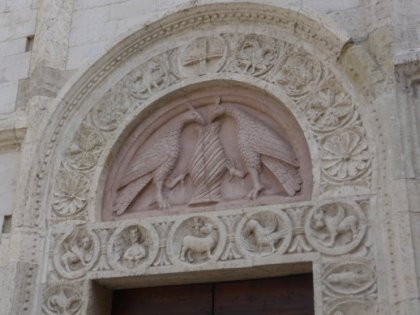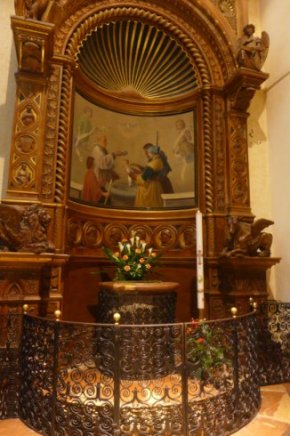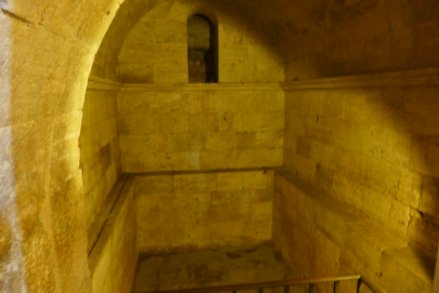|
San Rufino |
|
|
The cathedral of Assisi; it took over
this function from Santa Maria Maggiore around 1000 years ago. History The present building replaced two earlier churches also dedicated to San Rufino. There is a splendidly romantic story about a disagreement between the Bishop Ugone of Assisi and the town in the eleventh century. The bishop wanted the body of Rufinus in his sarcophagus moved from the old church to the then Cathedral of Santa Maria Maggiore. There was, it seems, a tug-of-war involving that sarcophagus; then town put up seven men, while the bishop cheated with sixty. However, the town deservedly won and the Bishop had to give in, and the building of a new church began around 1035. This church was situated where present piazza is now, in front of the church. It seems that this church wasn't up to the job; it was replaced by the present building, which was begun in 1140, though progress was slow. Exterior The facade is worth a good long look. The central rose window is supported my three male figures (telemones) standing on mythical creatures. Around the window are sculptures representing the four evangelists. The theology of many of the carvings is rather more complex, with various references to the apocalypse. The lunette over the main door shows the enthroned Christ between a Madonna of the milk and a bishop, presumably Rufino. Over right hand door are two peacocks drinking from a vase: over the left hand door two leopards are doing the same thing. on either side of the door are two lions, one holding a ram, the other eating a man. The lower part of the campanile is a survivor from the original church; in that church, it was next to the apse. |
|
|
|
|
|
|
|
|
|
|
|
Interior After the eventful facade, the interior can come as something of a disappointment. This is mainly due to the rebuilding of the church in the later sixteenth century - the building had become unstable, not good in an area prone to earthquakes. Under the main altar (below right) are the remains of Saint Rufino. |
|
|
|
|
|
|
|
| Two interesting features from the interior are the font (below left) and the Roman cistern, in the foundations of the campanile. The font comes from Ugone's church; St Francis and St Clare were christened at this font. | |
|
|
|
An aside: who was Rufino? It is said that Rufino, or Rufinus, was the first bishop of Assisi (though there is no actual evidence for this) and he converted the town to Christianity. According to legend he was martyred in 238 by being thrown into a river with a millstone tied to his neck - this followed an attempt to burn him alive which didn't work. |
|
|
|
|
